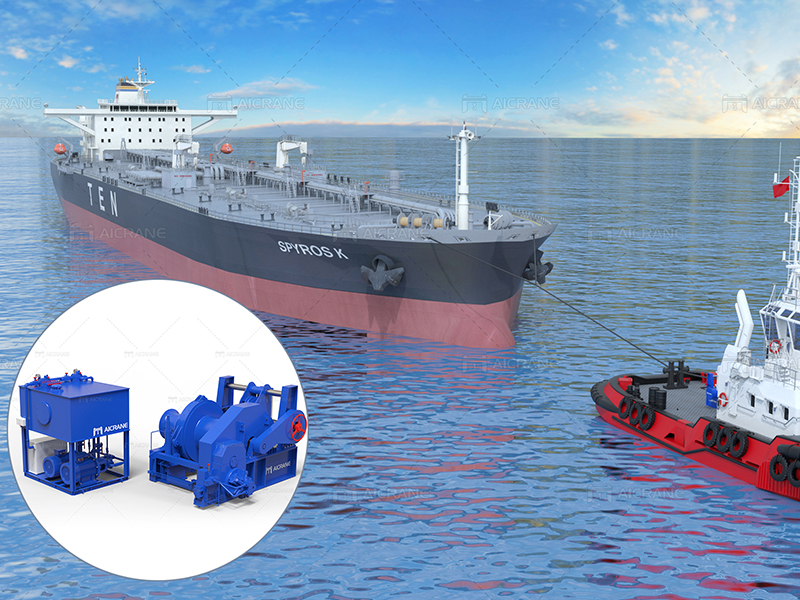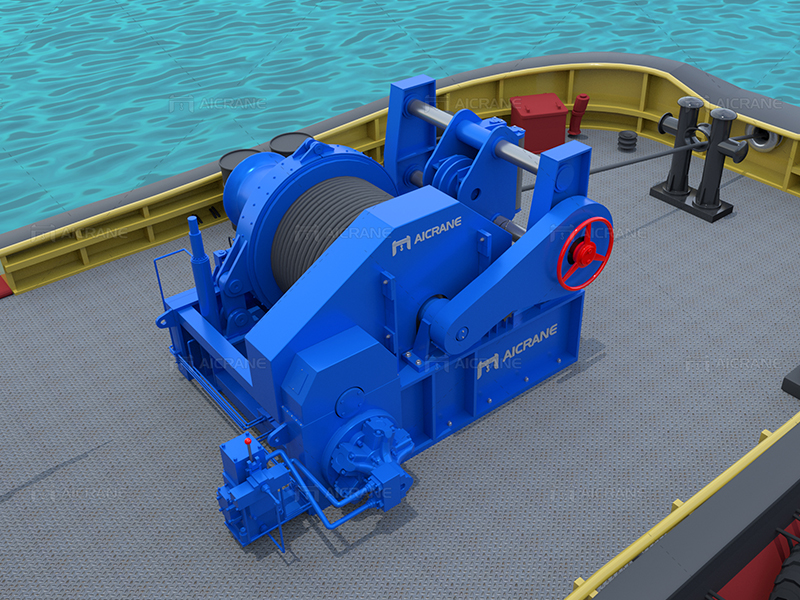Marine towing winches play a crucial role in the maritime industry, providing the muscle needed to tow and maneuver vessels of varying sizes. These powerful machines are essential for tasks such as towing disabled ships, assisting in harbor operations, and handling offshore installations. In this article, we will explore what a marine towing winch is and delve into the intricacies of how it works.

What is a Marine Towing Winch?
A marine towing winch is a mechanical device designed to reel in or pay out a cable or line for the purpose of towing or mooring vessels. These winches are typically mounted on tugboats, salvage vessels, and other maritime platforms that engage in towing operations. The primary function of a towing winch is to apply the necessary force to tow or position another vessel, ensuring safe and efficient maritime activities.
Components of a Marine Towing Winch:
Drum: At the heart of the towing winch is the drum, which is a cylindrical spool around which the towing cable is wound. The drum’s size and capacity vary depending on the intended use and the size of the vessels it is designed to tow.
Motor and Power System: The motor provides the winch with the necessary power to operate. The power system can be hydraulic, electric, or a combination of both, depending on the specific design and requirements of the winch.
Gearbox: The gearbox is responsible for adjusting the speed and torque of the winch. It ensures that the winch operates effectively under different load conditions, providing the necessary power for towing.
Brake System: A reliable brake system is essential for controlling and stopping the motion of the drum. This is crucial for maintaining precise control over the towing process and preventing accidents.
Control System: The control system is the interface through which the operator manages the towing winch. It includes levers, buttons, or a digital interface that allows for precise control over the cable’s movement.

How Does a Marine Towing Winch Work?
Engagement and Disengagement: Before initiating a towing operation, the operator engages the winch by activating the power system. This allows the drum to rotate and the cable to be either paid out or reeled in.
Towing Process: During towing, the cable is extended from the drum and attached to the vessel being towed. The marine winch applies force through the cable, allowing the towing vessel to pull or guide the other vessel.
Monitoring and Control: The operator monitors various parameters such as tension, speed, and direction using the control system. Precise control is crucial to ensure the safety of both the towing and towed vessels.
Braking and Stopping: The brake system plays a vital role in stopping the drum’s rotation when needed. This is crucial for avoiding abrupt movements and ensuring a controlled and safe towing process.
Applications of Marine Towing Winches:
Tugboat Operations: Tugboats equipped with towing winches assist larger vessels in navigating through narrow channels, berthing, and departing from ports.
Salvage Operations: Towing winches are essential in salvage operations, helping to recover and tow vessels that are stranded, damaged, or in distress.
Offshore Industry: Towing winches are used in offshore installations for positioning and mooring purposes, ensuring stability in various sea conditions.
Conclusion:
In conclusion, marine towing winches are indispensable tools in the maritime industry, enabling the safe and efficient towing of vessels in diverse marine environments. Understanding the components and workings of these winches is crucial for those involved in maritime operations, ensuring the success of towing endeavors and the overall safety of the maritime community. As technology continues to advance, marine towing winches will likely see further innovations, enhancing their capabilities and reliability in the ever-evolving maritime landscape. For more info, visit https://steelmillcranes.com/